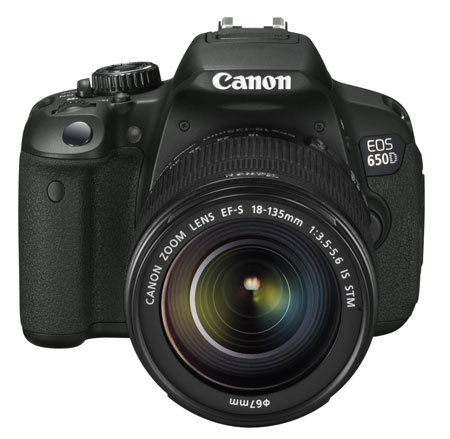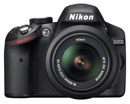Canon EOS T4i / 650D review
-
-
Written by Ken McMahon
Verdict
The Canon Rebel T4i / EOS 650D is Canon’s latest upper entry level DSLR. It fits between its predecessor, the Rebel T3i / EOS 600D and the EOS 60D in the Canon line up and, to a casual observer, it might seem to have very little to offer over the model it replaces. It has a new sensor, but with the same 18 Megapixel resolution, the same sized 3 inch flip out screen and more or less the same movie recording options as the Rebel T3i / EOS 600D.
But if you look beyond the headline specifications, the Rebel T4i / EOS 650D is in fact one of the most exciting DSLRs that the company has delivered for some time. First there’s the touch-screen; as well as being a huge draw for compact upgraders, because it’s so well integrated, the touch-screen also offers new levels of control for experienced shooters.
The hybrid CMOS AF sensor combined with improvements to the stand alone phase detect AF provides the T4i / 650D with one of the most sophisticated focusing systems of any Canon DSLR, particularly for continuous autofocus during movie recording. Coupled with one of the new quiet STM lenses its movie autofocusing is on a par with that offerred by touch-screen mirrorless compact system cameras. Add in improvements to continuous shooting, in-camera lens corrections and a very effective new low-light stacking mode that can be used at any ISO sensitivity setting and you’ve got a very compelling upgrade offer as well as an upper entry level DSLR that has plenty to offer compared with equivalent models from Nikon and Sony.
 |
Compared to Nikon D3200
 | ||
The D3200 is Nikon’s most recent DSLR, and though a ‘budget’ entry level model will prove an attractive alternative for those looking for a DSLR with resolution to match higher end models, but can live without some of the refinements of the more expensive uper entry level models.
So first of all let’s look at what you’ll miss out on by opting for the D3200 over the Rebel T4i / EOS 650D. For novices probably the most significant difference is the T4i / 650D’s touch-screen, which makes the camera much easier to operate, particularly if you’re unfamiliar with the menu system. Though it’s only fair to point out that the D3200’s on-screen help is much better than what’s on offer on the T4i / 650D. The screen on the D3200 is is the same size as the T4i / 650D, but is fixed whereas the latter’s side-hinged articulated screen can be positioned pretty much anywhere you want it.
Another big new feature of the T4i / 650D is its hybrid focusing system with 9 cross-point sensors in the main phase detect array and phase detect points on the sensor. The D3200 has 11-point phase detect AF and for stills shooting using the viewfinder there’s little to choose between them, but in Live view and particularly for continuous AF while recording movies the T4i / 650D wins hands down.
Another advantage the T4i / 650D has is its new STM kit lenses. Their quiet motors means there’s no distracting buzzing as the camera focuses during movie recording. Even with non STM lenses the T4i / 650D performs well and it’s also worth bearing in mind you can use all Canon EF and EF-S lenses with full autofocus capabilities on the T4i / 650D whereas the D3200’s lack of an AF motor means that only recent lenses (types G, D, AF-S and AF-I) will support full autofocus and metering modes.
Other things in the Rebel T4i / EOS 650D’s favour include faster continuous shooting, a higher maximum ISO sensitivty of 25600, Multi shot noise reduction, wireless flash control and auto exposure bracketing. Of course, all those things come at a price; with the 18-135 STM kit lens the Rebel T4i / EOS 650D is around 70 percent more expensive, though with the 18-55 IS II kit lens option that gap closes to around 30 percent.
The one clear advantage the D3200 enjoys over the Rebel T4i / EOS 650D is its higher resolution 24 Megapixel sensor. In testing, however, it’s hard to see what advantage this provides. Images from the T4i / 650D are sharper and punchier and resolve more image detail than those from the D3200 as well as enjoying better high ISO noise performance.
Overall, it’s clear that the T4i / 650D is a better camera than the D3200, but there’s a price to pay for those additional features and superior performance. Not everyone, particularly first time DSLR buyers need those features and the D3200 remains a compelling option as an affordable first DSLR. It’s also important to note the closer rival to the T4i / 650D will be Nikon’s long-awaited successor to the D5100, and I’ll update this page when that’s launched.
In the meantime, you can find out all about Nikon’s entry-level DLSR in my Nikon D3200 review.
Canon Rebel T4i / EOS 650D verdict
The upper entry level DSLR market is a tough environment and companies have to be bold, but also cautious in order to succeed. Canon is a canny operator in this respect, maintaining a clear distinction between its budget, upper entry level and mid-range models. The risk in this approach is that competitors who don’t operate under the same constraints can outmaneuvre you by providing features that you can’t for fear of cannibalizing sales from your own line up. Canon’s upper entry level models have come under increasing pressure of this kind not just from Sony’s SLT range, but from the rapid inroads that mirrorless compact system cameras have made into DSLR sales.
With the Rebel T4i / EOS 650D Canon has neatly addressed these issues. The Hybrid CMOS AF sensor improves AF capability in Live view but, more importantly, makes this the first Canon DSLR to provide truly effective continuous AF during movie recording, putting it on a par with Sony’s SLT models and touch-screen mirrorless CSC’s like the Olympus PEN E-P3 and Panasonic Lumix GX1.
Its 3 inch touch-screen, another first on a Canon DSLR, is intended to pull in compact upgraders and will succeed, but even those who love to use physical controls will find it enhances the handling characteristics in a very positive fashion. Other enhancements, like built-in stereo microphones, 5fps continuous shooting, the Multi shot noise reduction stacking mode and built-in correction for chromatic aberration make the Rebel T4i / EOS 650D an excellent all-round performer and a hard act to beat for first time buyers with a little extra in the budget or those looking to move up to the next level. I highly recommend it.
| Good points 3 inch LCD capacitive touch-screen. Hybrid CMOS AF sensor with continuous AF for movies. Quiet focusing STM kit lens option. Chromatic aberration correction. 5fps continuous shooting. Multi shot noise reduction mode.Bad points Only 3-frame auto bracketing. Movie crop / digital zoom of T3i / 600D dropped. Live mode hybrid AF can be slow and unresponsive. 
| Scores (relative to 2012 budget DSLRs) | |||
Build quality: Image quality: Handling: Specification: Value: Overall:
| 17 / 20 18 / 20 18 / 20 18 / 20 17 / 20 88% | |||




